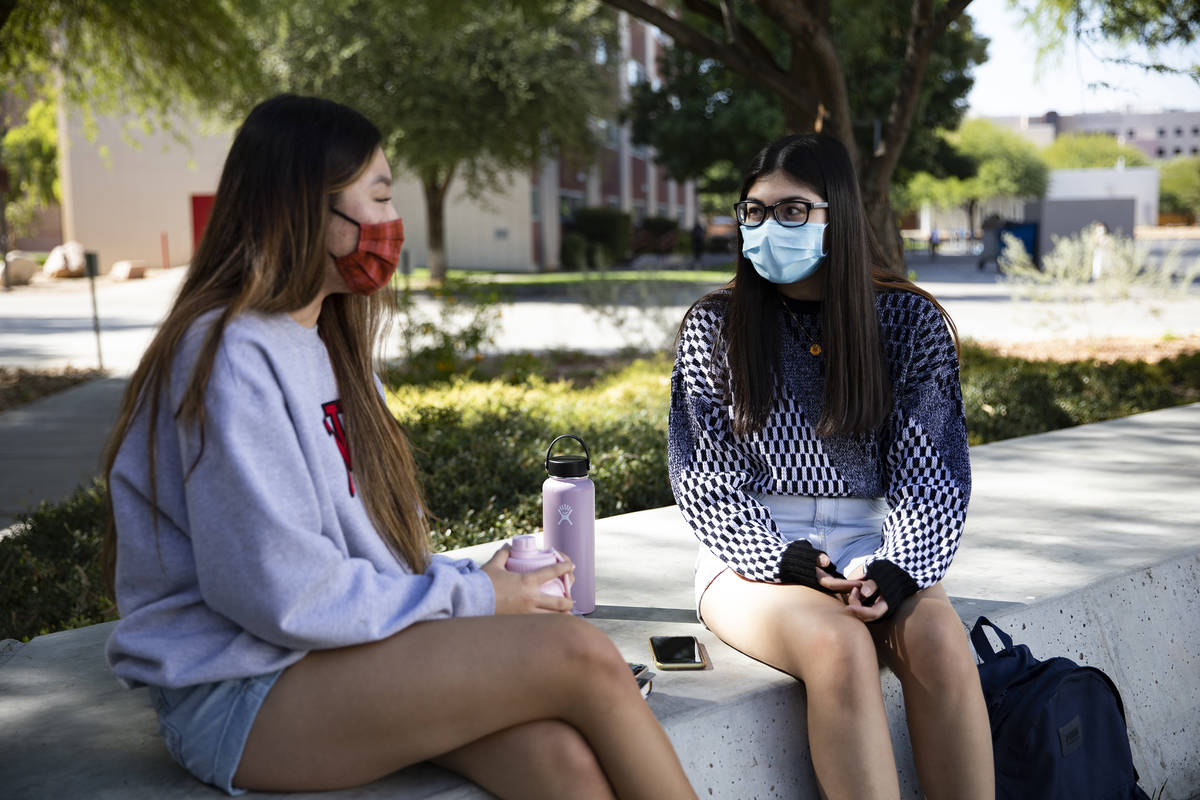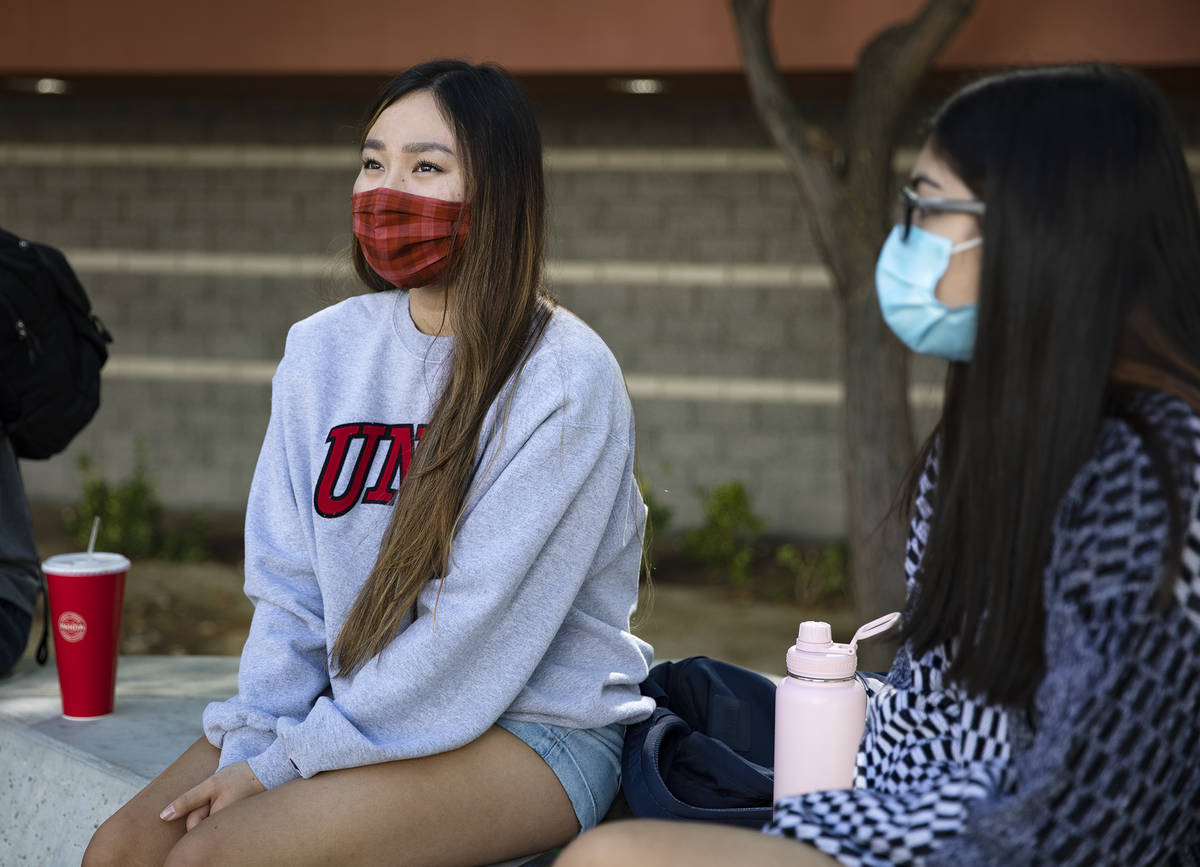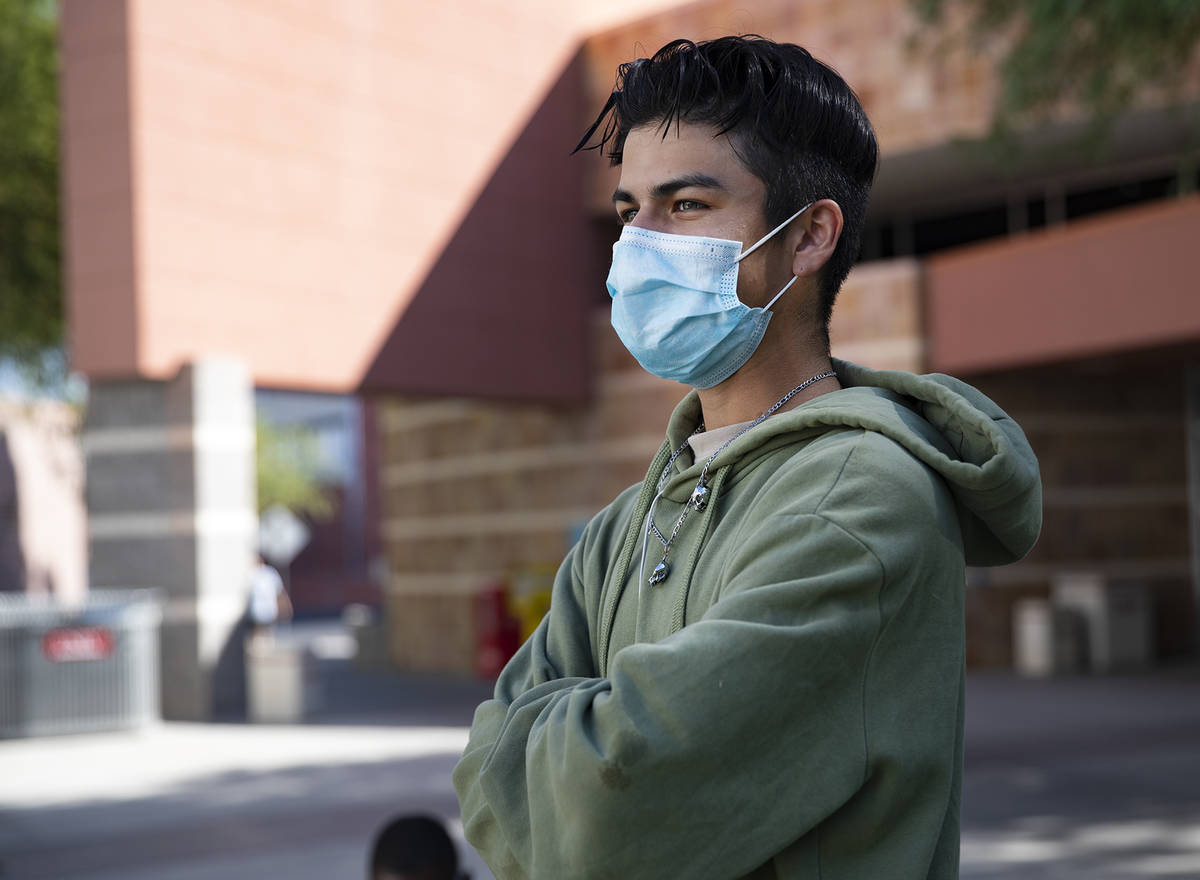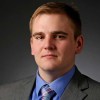Nevadans want ‘normal life’ to return as COVID fatigue sets in
In Nevada and more than half of other U.S. states, COVID-19’s spread is regaining momentum.
But after months of lockdowns, social isolation and mask-wearing, Nevada officials are concerned about “COVID fatigue,” describing frustrated and restless residents who now choose to ignore recommended pandemic precautions.
The largest growth in new cases in Nevada and the U.S. has been among college-age adults, UNLV epidemiologist Brian Labus said.
Michelle Kim, a pre-nursing student at the university, said she is still following health and safety guidelines because she doesn’t want to contract the disease and give it to her parents or grandmother. People she works with off-campus don’t always share her concerns.
“They’re already getting back to partying, and they’re just giving up,” the 18-year-old said. “They want normal life to get back.”
Last week, Gov. Steve Sisolak acknowledged an “alarming trend” of new cases and hospitalizations across Nevada, which he attributed to fatigue. Likewise, the Nevada Hospital Association said this month the “profound apathy of the general public” could be causing a rise in patients.
“We can’t get tired because the virus isn’t tired,” Sisolak said. “And if we allow the fatigue to take over us, the virus will spread.”
Cases almost doubled
Nevada’s seven-day moving average of newly reported cases was 712 on Friday, almost double what it was a month ago and the highest it has been since mid-August. State health officials have said they expect to see an increase in deaths by mid-November.
COVID-19 has killed more than 220,000 Americans and 1,700 Nevadans this year.
The average number of hospitalizations among infected patients rose in at least 38 states over the past week, The Washington Post reported Friday.
During the height of COVID-19’s spread in Nevada in July, intensive-care units across Clark County reached nearly 90 percent capacity. Acute-care hospitals added hundreds of beds as a precaution.
Nevada’s hospital capacity is currently not under threat, but neighboring states are faring worse.
Some Idaho hospitals are so overwhelmed they are considering sending patients out of state for care, The Associated Press reported. In Utah, unprecedented levels of new COVID-19 patients have filled at least two hospitals’ intensive-care units past capacity, the Salt Lake Tribune reports.
“One day you’re fine, you’re not at a capacity, and a week later you can be bumping up against your capacity for beds and ICU units,” Sisolak warned in his address last week.
While the young adults seeing the largest case growth in Nevada are unlikely to be hospitalized or die after contracting COVID-19, they are likely to spread it to other people who could suffer more severe outcomes, Labus said.
Earlier this month, University of Nevada, Reno President Brian Sandoval announced all classes would be moved online after fall break because one-in-nine cases in Washoe County could be traced back to the university. The county reported 350 additional cases Friday, its largest single-day increase on record.
“The more social people are, the more likely they are to spread the disease,” said Labus, who serves on Sisolak’s medical advisory board for COVID-19, “If you’re not worried about dying of COVID, you’re not going to take the same precautions as someone who is very concerned.”
Isacc Mendoza, another UNLV pre-nursing sophomore, said he has received invites to Halloween gatherings but is planning to pass on them after seeing photos of crowded house parties on Facebook. For now, he is limiting his outings to one-on-one hangouts in uncrowded places.
“Everybody’s tired of it, you know. Even I’m tired of it,” he said of the pandemic. “But, I mean, it’s something that we all got to work together to do. We’re not gonna get rid of this if everybody’s not working together.”
Sisolak’s recent relaxing of COVID-19-related restrictions could also be influencing people’s behavior, said Dr. Luis Medina-Garcia, an infectious disease physician at University Medical Center in Las Vegas.
In late September, Sisolak raised size limitations on public gatherings from 50 to 250 people. Not long before that, the governor’s COVID-19 Mitigation Task Force allowed bars to reopen in Clark and Washoe counties.
While the loosening of restrictions are pivotal to help Nevada’s economy recover, Medina-Garcia said they are likely resulting in unintended consequences.
“It provides a false sense of security,” he said. “It’s easy to forget we still are fighting an invisible foe.”
Holiday concerns
The upcoming holiday season has Medina-Garcia and other health experts worried because it is a time when people typically travel to family gatherings for Thanksgiving and Christmas.
Medina-Garcia and other experts say that while people feel safer around their family and friends than strangers, those interactions pose a greater risk of COVID-19 spread. That is because people stop taking precautionary measures like wearing a mask, staying 6 feet apart or frequently washing their hands.
That could lead to not only the spread of COVID-19 but also influenza.
“You have a bad flu season by itself, and your hospital capacity could be in danger,” Southern Nevada Health District chief health officer Dr. Fermin Leguen said. “If in addition to that, you bring COVID in proportion similar to what we experienced in July and August, when our hospital capacity was full, you’re really in a dangerous process.”
Leguen said the health district has bolstered its traditional flu prevention and vaccination campaign this year, and it is working on a campaign about “COVID fatigue.”
So when will things get back to normal? In short, Leguen said, not anytime soon.
Achieving herd immunity through natural infection has practically zero chance of happening, he said. It would require at least 60 percent of the population to have caught COVID-19, and in the U.S. only about 10 percent of people are thought to have had the virus. Also, there is scientific evidence that reinfection can occur.
On Thursday, the antiviral medicine remdesivir became the first drug to receive full Food and Drug Administration approval for treating COVID-19, The Associated Press reported. But Nevada has yet to release its COVID-19 vaccination plan, though surrounding Western states have released a first draft.
“Until we have an effective vaccine and all the complementary drugs, I would say it’s hard to see the end of the pandemic,” Leguen said.
Contact Michael Scott Davidson at sdavidson@reviewjournal.com or 702-477-3861. Follow @davidsonlvrj on Twitter.




















